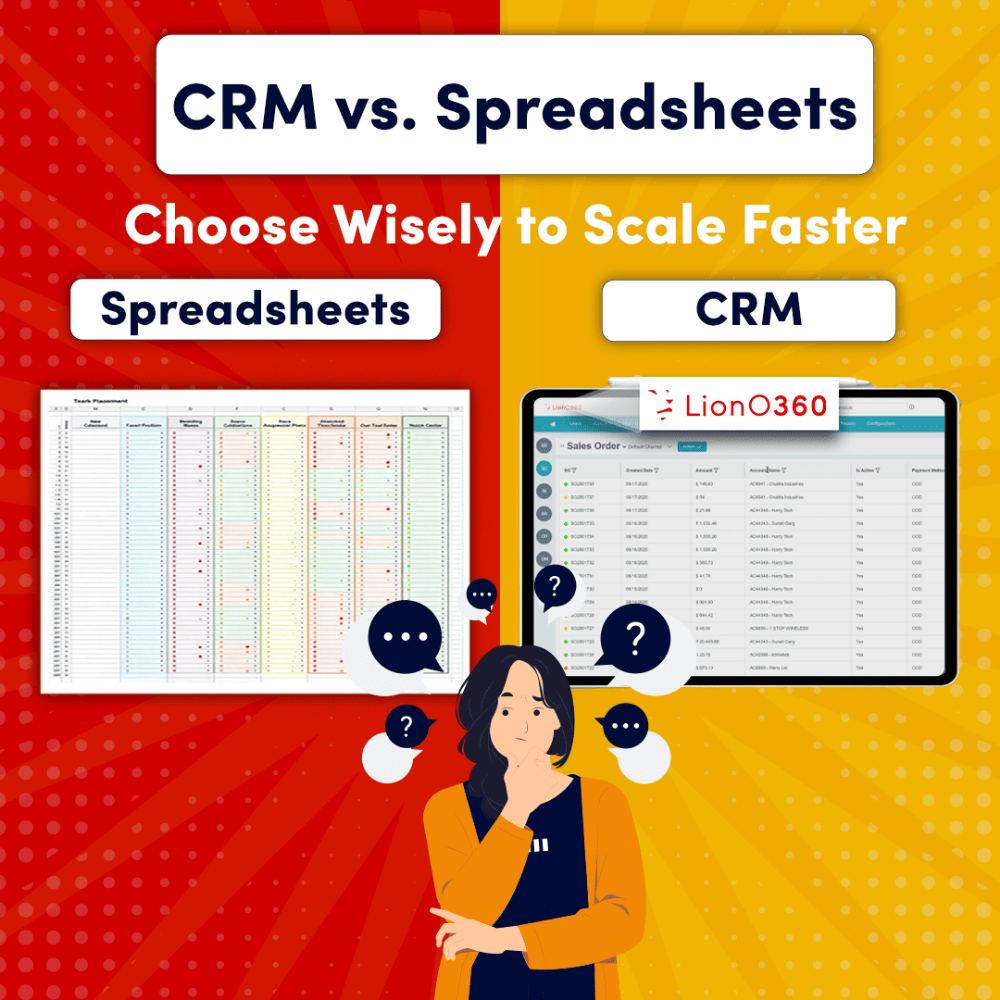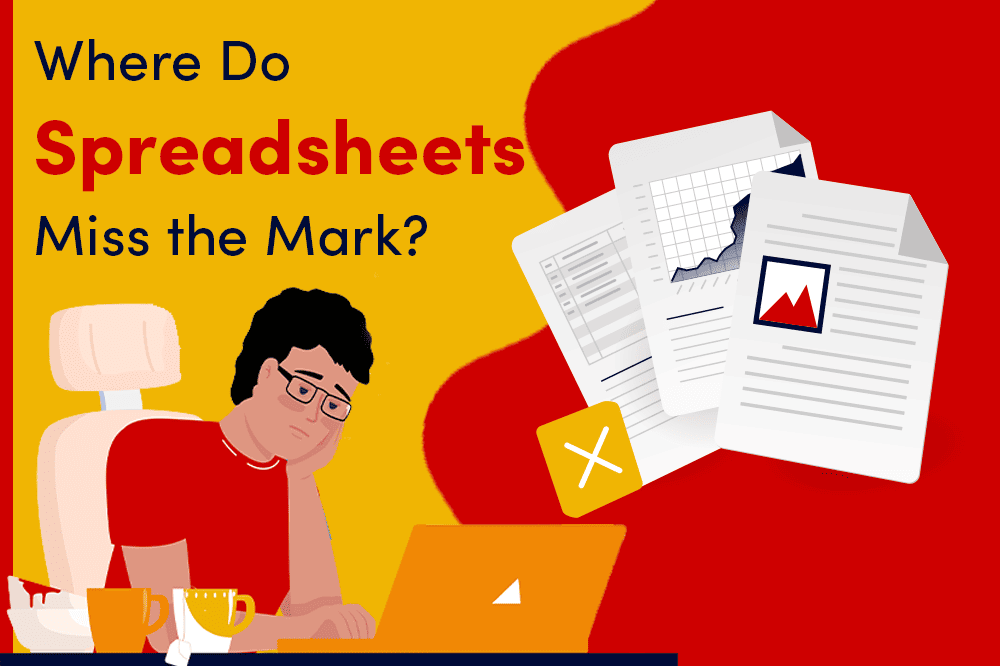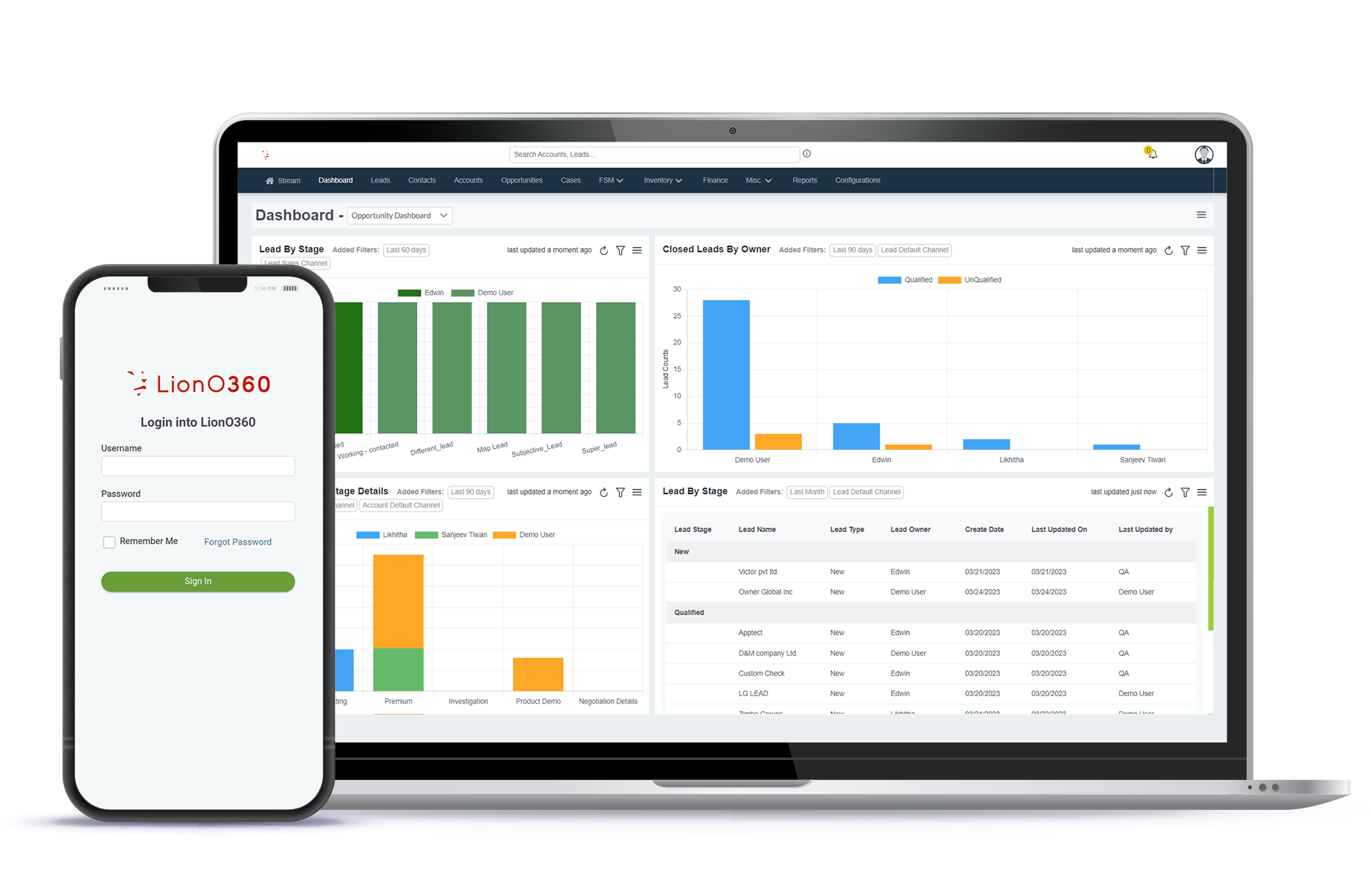
For many decades, spreadsheets like Microsoft Excel or Google Spreadsheet have been the "go to" tools for businesses looking to manage their data. Sales leads, client databases, follow-ups, inventory, quotations, all would sit nicely in rows and columns, color-coded, filtered and all. But as companies grow, as customer touchpoints become dynamic and engagement, spreadsheets start to show their limitations.
Enter CRM - a sophisticated, centralized, and strategic platform that not only organizes data, but in fact supports business growth through actionable insights.
Spreadsheets: Traditional Tool for Modern World
What are spreadsheets used for?
Spreadsheets like Excel and Google Spreadsheets are powerful for:
- Basic data entry, calculations, and tabulation
- Simple analysis using formulas and pivot tables
- Creating lists of contacts, deals, inventory, invoices
- Generating basic charts and graphs for reporting
They will most likely remain ubiquitous for basic calculations, financial models, or tabular datasets. They provide flexibility and are simple to use, so it's no wonder they start as the leading preference for many SMEs. However, once you have numerous people engaging in multiple processes with multiple touchpoints with customers, spreadsheets start to define limitations.
Why Spreadsheets don’t Scale with Business Growth
Now come to the topic - CRM vs spreadsheets and why US businesses are switching to CRM in 2025. Let’s discuss:

No real-time collaboration tracking
With Google Sheets functionality for editing simultaneously, there is no easy way to track changes, follow-up, or have conversations with customers and teammates with any explicit context. Generally, team members overwrite data or duplicate data without a well-defined workflow.
Limited data relationships
Spreadsheets are limited to rows and columns. CRM platforms establish relational databases – relating leads to deals, tasks, to emails to documents to communications to allow a 360° view of customers.
Poor Workflow automations
You cannot automate lead assignments, email triggers, follow-up reminders, or pipeline movements within spreadsheets without VBA or some third-party integrations that most companies will never adopt.
No Customer Interaction Logs
Spreadsheets cannot log phone calls or video record meetings; they do not integrate with your business emails or WhatsApp conversations in a way that allows for a composite communication trail for your customers.
Lack of Insights and AI Recommendations
CRM platforms have pipeline analytics, sales forecasts, churn predictions, and activity heat maps - allowing for strategic thinking. Spreadsheets rely on you to create charts and have no predictive capabilities or professional insight.
Data security and access control issues
Simply sharing spreadsheets over email or drives exposes you to a potential versioning error and/or intentional or unintentional data breaches. With a spreadsheet there's little control over what a person can edit, view, or delete unless you have a complicated permissions hierarchy established.
What is a CRM Platform?
A Customer Relationship Management platform is a cloud-based software system. It is designed to manage and nurture your company with its customer interactions and their potential. It acts as a central repository for:
- Leads, contacts, accounts, opportunities
- Communication history (calls, emails, chats)
- Tasks, follow-ups, and meeting schedules
- Sales pipelines and deal stages
- Quotations, invoices, and document management
- Insights and analytics dashboards
Modern CRMs integrate with marketing automation tools, field service management, inventory management, and ERP systems, creating an end-to-end digital ecosystem.
Key Benefits of CRM Over Spreadsheets
| CRM vs. Spreadsheets: Why this Decision Matters | |
| CRM | Spreadsheets |
|---|---|
| Designed to manage customer relationships, sales pipelines, workflows, and communications systematically. | Built for basic data storage, lists, and calculations without specific customer management features. |
| Enables real-time team collaboration with role-based access and activity tracking. | Limited collaborations with the risks of overwriting data and version mismatches. |
| Limited collaboration & risks of overwriting data and version mismatches. | No automation unless complex macros are created. |
| Full-featured mobile apps for sales, service, and management on the go. | Limited mobile usability and features. |
| Boosts productivity, enhances customer experience, and supports strategic growth of your business. | Increases manual work, risks errors, and limits business scalability. |
Let’s discuss in detail:
1. Enhanced Productivity
CRMs automate repetitive tasks such as lead assignments, follow-up reminders, quotation generation, and customer onboarding emails, freeing up your sales and support teams for high-impact work.
2. Improved Collaboration
With a CRM, all teams (sales, marketing, support, field service) work on the same real-time data with role-based access. This eliminates duplicate entries, manual consolidations, and data silos.
3. Superior Customer Experience
By having complete customer histories, preferences, and communications at their fingertips, your teams can personalize every interaction, increasing trust and conversions.
4. Actionable Business Insights
CRM platforms provide reports on:
- Deal wins rates and sales rep performance
- Conversion funnel drop-offs
- Customer lifetime value and churn risk
- Forecasted revenues and inventory needs
5. Anywhere, Anytime Access
Being cloud-based, CRMs allow your field of sales or service executives to access customer data, update meetings, and manage quotations on-the-go via mobile apps.
6. Better Data Security
CRMs ensure robust data protection with user authentication, encrypted storage, role-based access, and activity logging – reducing risks of data leakage inherent in spreadsheets.
CRM Automation: Where the Future Lies
Excel isn’t going away. It remains an analytical tool for data exploration and analysis. However, it is evolving into a complementary tool rather than a primary data management system. Microsoft itself is integrating Excel with Power BI, Dataverse, and Dynamics CRM to create a connected business ecosystem.
The future lies in:
- Integrations: Using Excel for analysis, with CRM as the data source.
- Automations: Leveraging Excel for formulas, while CRM handles workflow automation.
- AI-driven data preparation: Where Excel processes outputs, and CRM delivers predictive insights and actions.
Why CRM Adoption is Spreading Rapidly
Businesses that manage customer relationships strategically outperform those that manage them manually. The market for CRM software continues to grow exponentially, with platforms integrating advanced features like:
- AI Lead scoring
- Chatbot integrations
- Field service management (FSM)
- Inventory and order management
- Marketing automation workflows
LionO360: One Integrated Platform for Your CRM Needs

LionOBytes is an award-winning CRM platform in the USA, built for small and mid-sized businesses seeking to scale efficiently. Here is what LionO360 offers:
- Complete CRM Solution – Manage leads, contacts, opportunities, quotations, invoices, and pipeline workflows from a single interface.
- Integrated Field Service Management – Track field agents, manage service requests, plan routes, and optimize field operations seamlessly.
- Inventory Management Module – Unlike traditional CRMs, LionO360 includes inventory tracking, stock visibility, and order fulfilment – ideal for distribution and sales organizations.
- Mobile CRM & FSM Apps – Empower your field teams to update visits, capture orders, access customer data, and generate quotations on the move.
- Advanced Reporting & Analytics – Make data-backed decisions with real-time dashboards and performance reports tailored to your KPIs.
- Quick Deployment & Intuitive UI – Go live faster with easy onboarding, training, and user adoption backed by LionOBytes’ expert support.
- Affordable & Scalable – Designed to grow with your business needs without complex integrations or high costs.
Also Read: What is CRM and How does it Work?
Frequently Asked Questions
What are the main differences between CRM and spreadsheets?
The main difference between CRM and spreadsheets lies in their purpose and capabilities. Spreadsheets are basic tools designed for data storage, calculations, and simple lists. CRMs also integrate seamlessly with emails, calls, and business apps to create a comprehensive 360-degree view of each customer, making them dynamic and strategic tools compared to the static nature of spreadsheets.
Is CRM software worth it for startups in the USA?
CRM software is highly valuable for startups in the USA. It enables them to organize leads and customer data systematically, automate follow-ups to avoid losing potential business, and build professional and personalized customer experiences right from the start.
What are the risks of using spreadsheets for customer management?
Using spreadsheets for customer management carries several risks. Manual data entry often leads to errors and duplications, resulting in unreliable records. Without automated reminders and workflows, businesses can easily miss follow-ups, leading to lost opportunities. Collaboration is also challenging, as multiple users working on the same sheet can overwrite data and create confusion.
Is there a simple CRM alternative to spreadsheets for US-based teams?
Yes, there are simple CRM alternatives to spreadsheets designed specifically for US-based teams. For example, LionO360 offers an intuitive, cloud-based CRM that combines customer relationship management with field service and inventory management, all on one platform. Unlike complex traditional CRMs, LionO360 is easy to set up, requires minimal training, and features user-friendly dashboards and mobile access. Its affordability and scalability make it ideal for small and mid-sized businesses looking to replace spreadsheets with a structured, collaborative, and growth-focused solution that drives productivity and enhances customer management efficiency.












